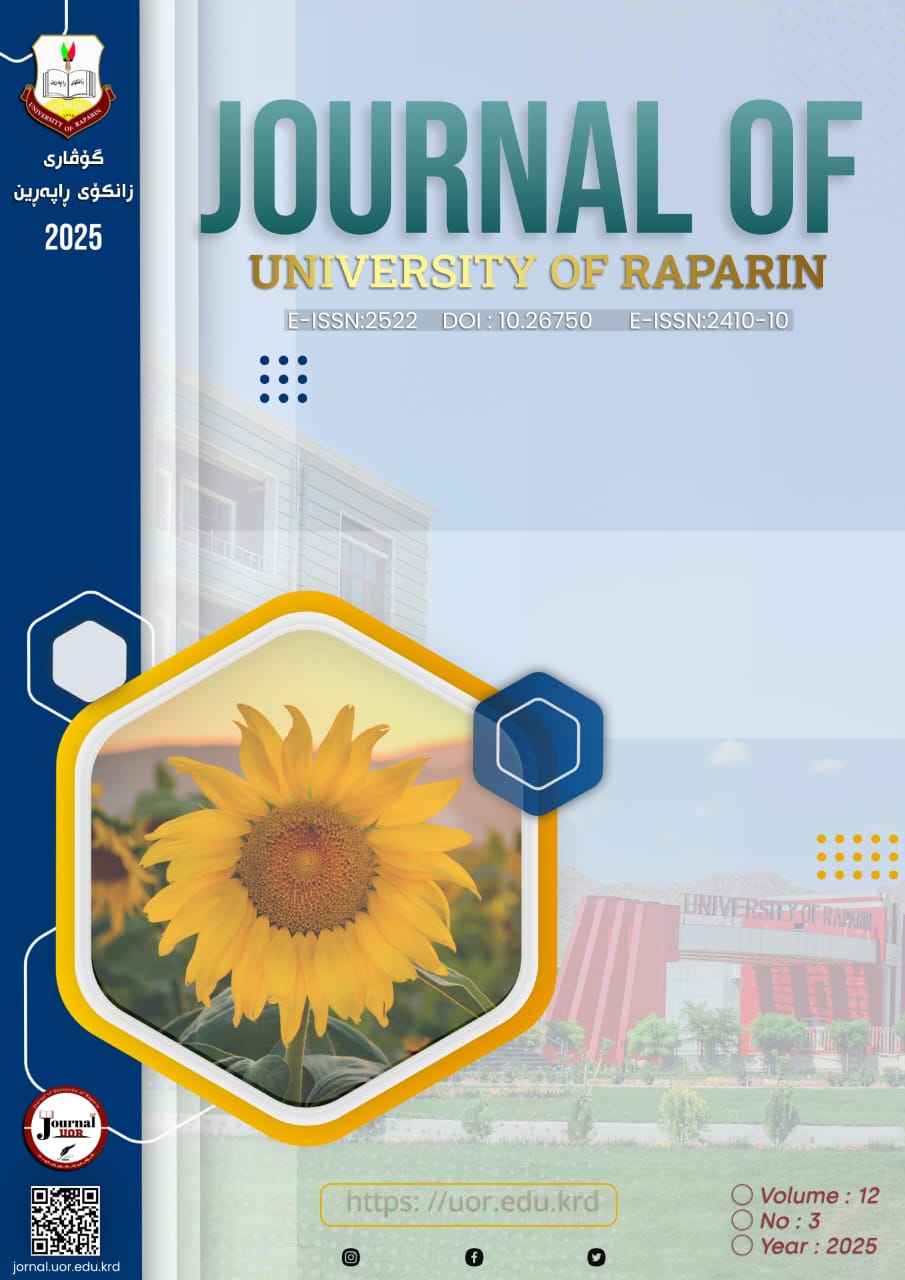Adorno's Aesthetic Theory as the Critique of Art in Society
DOI:
https://doi.org/10.26750/art039.a1884الكلمات المفتاحية:
Aesthetics, Culture Industry, Art Criticism, Autonomous Art.الملخص
Although Adorno's philosophy represents more critical theory, but "Aesthetic theory” includes a broad view of criticism in many different fields, especially criticism of art, education and sociology. Adorno's critical view of art makes many contributions to contemporary argument, specifically his critique of art in modern and capitalism society. This investigation attempts to interpret art as critique of modern and contemporary capitalism society from Adorno's perspective, which is a focus on art criticism of society and then autonomous art as a strong alternative for alteration, with the rejection of traditional art and nonautonomous art. The study seeks to answer the following questions; what are aesthetics and autonomous art? Then, art as critique of modern and capitalism society with an interpretation of the culture industry and how to look at art, which is explained throughout the study in light of Adorno's philosophy.
المراجع
کارۆل زاوەرلاند. (٢٠١٢). ڕێبەرییەک بۆ ئێستێتیکى ئادۆرنۆ، وەرگیرانى لە ئەڵمانیەوە کاوە جەلال،گۆڤارى کۆنسێپت، ١-٣٩.
گێتمان، زیفەرت، ئانیمارى (٢٠٠٩). ڕێبەرییەک بۆ ئێستێتیک، وەرگیڕانى لە ئەڵمانییەوە کاوە جەلال، سلێمانى: بەڕێوەبەرێتى چاپ و بڵاوکردنەوەى سلێمانى.
Adorno، 2005. CULTURE INDUSTRY RECONSIDERED. تأليف: The Culture Industry Selected essays on mass culture. London and New York: Routledge، p. 98.
Adorno، G. A. a. R. T. E.، 2002. Aesthetic Theory. London,New York: Continuu, Regents of the University of Minnesota.
Adorno، M. H. a. T. W.، 2002. DIALECTIC OF ENLIGHTENMENT Philosophical Fragments Edited by Gunzelin Schmid Noerr Translated by Edmund Jephcott. United States of America: Stanford University Press in 11/13.5 Adobe Garamond.
Adorno، T. W.، 1974. Commitment, in Notes to Literature, Volume Two, ed. Rolf Tiedemann, trans. Shierry Weber Nicholsen. New York: Columbia UP.
Adorno، T. W.، 2004. NEGATIVE DIALECTICS, Translated by E.B.Ashton. London and New York: Taylor & Francis e-Library.
Bernstein، J. M.، 2005. Adorno, Theodor The Culture Industry Selected essays on mass culture. London and New York: Routledge.
Blunden، A.، 2005. The Culture Industry: Enlightenment as Mass Deception. Theodor Adorno and Max Horkheimer (1944)، Feb.
Bowie، A.، 2022. Theodor W. Adorno: A Very Short Introduction. Oxford: Oxford University Press.
Cascardi، A. J.، 2010. Prolegomena to Any Future Aesthetics. تأليف: Art and Aesthetics After Adorno. United States of America: Regents of the University of California، pp. 7-40.
Dainow، B.، 2014. Frankfurt meets Holywood: Adorno and Horkheimer's "The Culture Industry". ThinkMetrics، February، pp. 1-6.
Hammermeister، K.، 2002. The German Aesthetic Tradition. New York: Cambridge University Press.
Hantelmann، D. v.، 2023. The Materiality of the Artwork. The Materiality of the Artwork، 1 August، p. 1.
Huhn، T.، 2006. Introduction Thoughts beside Themselves. تأليف: The Cambridge Companion to Adorno. United States of America: Cambridge University Press.
Inceefe، I.، 2018. Adorno’s conception of autonomous art in light of Kant’s and Hegel’s philosophies. مكان غير معروف:Middle East Technical University.
J. M. Bernstein, Claudia Brodsky,، 2010. Art and Aesthetics After Adorno. Berkeley, Los Angeles, London |: The Townsend Center for the Humanities, University of California | Berkeley.
Klinger، M.، 2023. A summary of Adorno and Horkheimer’s quite interesting and staggeringly pretentious views on Art. E2 REVIEW، 15 8، p. 1.
Maharaj، A.، 2013. The Dialectics of Aesthetic Agency. London New York: Bloomsbury Academic.
Petsche، J.، 2013. The Importance of Being Autonomous:. Mediations is the journal of the Marxist Literary Group، pp. 143-158.
Pozo، A. G.، 2004. From Hegel to Adorno, The philosophical understandig of art. Universidad de Sevilla، p. 28.
Salles، H.، 2010. Expression in Adorno's Aesthetic Theory. [متصل]
Available at: https://ueaeprints.uea.ac.uk/id/eprint/19910/2/Expression_in_Adorno's_Aesthetic_Theory.pdf
Singh، S.، 2016. The Spiritualization of Art. Adorno Studies, Volume 1, Issue 1, March، pp. 32-43.
Trappen، S. L.، 2023. Dialectic of Enlightenment. Dialectic of Enlightenment، 3 8، p. 1.
Witkin، R.، 2003. Adorno on popular culture. London and New York: Routledge.
Yefimenko، S.، 2017. Sublime Indifference: Reconsidering Aesthetic Autonomy. United States: ProQuest LLC .
Zuidervaart، L.، 1993. Adorno's Aesthetic Theory: The Redemption of Illusion. London: MIT Press.
زاوەرلاند, ک., ٢٠١٢. رێبەرییەک بۆ ئێستێتیکى ئادۆرنۆ، کاوە جەلال لە ئەڵمانیەوە. گۆڤارى کۆنسێپت, pp. ١-٣٩.
گێتمان-زیفەرت, ئ., 2009. رێیەرییەک بۆ ئێستێتیک، کاوە جەلال لە ئەڵمانییەوە بۆ کوردى. سلێمانى: چاپخانەى بینایى.
التنزيلات
منشور
إصدار
القسم
الرخصة
الحقوق الفكرية (c) 2025 Journal of University of Raparin

هذا العمل مرخص بموجب Creative Commons Attribution-NonCommercial-NoDerivatives 4.0 International License.





